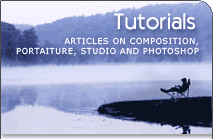Composing The Frame
In this article I will try to describe numerous techniques to compose a good photograph. Some of these techniques are well known (e.g. rule of thirds), some based on graphics of design and painting. I consider the techniques as jongleur balls. The more balls you hold in air (handle), the better pictures you can create:
- Rule of Thirds
- Narrow depth of field
- Framing the subject
- Converging lines
- Breaking the horizon
- Meaning of Lines
By the way I have to underline that these rules are created to be broken. A well traveled path may lead you only to an already known place.
Rule of Thirds
It is most known rule and very useful one. The idea is that you compose your image accordingly to the Golden Mean. It is most pleasant placement known, and it was used in design and architecture for millenniums. But for simplicity it was reduced to 8x5 and 3x3 grid lines.
So, if you place you subject in one third of the frame (not in the dead center) it will make the picture more pleasant to the eye. Besides, such a placement will imply a special meaning to the subject and the picture.
Here are some examples:
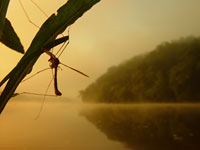

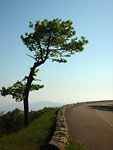
As you can see the images are formed accordingly to the rule. And they convey different mood and meanings. On the first image the mosquito dominates the scene and it doesn´t look so small and lost. Contrary, the second picture implies that the small jellyfish is lost and lonely. And finally the third image is well balanced and there is no inclination to either way.
Such mood and meaning is achieved by placement of the subject and filling the frame. I suggest that you analyze the images and understand how the placement and the size of the main subject relate to the mood. You may want to read the article at NatureScapes about Guidelines for Composition to learn more about application of rule of thirds and other aspects of visual design.
~ Top ~Narrow depth of field
It is not a straightforward composition technique, it´s technique to attract attention to your subject. I consider this technique of the same level as framing the picture (see next). You blur everything unimportant in the image by applying a shallow DOF, almost as putting a frame of a stain or dim glass atop the picture. This techniques could completely remove any attention to the background and concentrate it on the main subject. Pure background is another thing that you have to remember when composing photographs.
Examples:
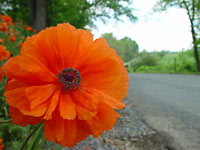
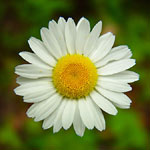
I used this technique for close-up photography to throw away the background. But in the first picture I left the road to be visible, so it tells us about the theme, but doesn´t distract from the flower. The same technique was used in the previous section (the picture with mosquito).
~ Top ~Framing the subject
To focus/lead the eye of the viewer you may consider to use framing. Any object, of any shape, placed before the main subject may be considered as a frame. Even when it used to show distance (like in mountain vistas). The main idea is to place an object(s) within the photograph that are boring and uninterested for the eye by themselves (or blurred), so the eye will move quickly from the object(s) to the main subject and will not leave the frame - restricted by the same boring objects.
Examples:
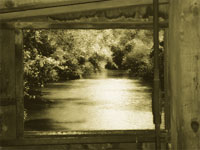
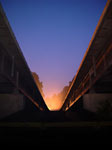
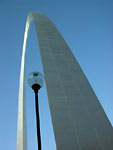
The first picture is a straightforward framing, though a powerful one, the second one is combined with converging lines (see next), and the last one uses the same technique, but the frame is the subject as well. Talking about framing you may want actually consider the actual frame of the image, which imposes certain meaning on the photograph itself.
~ Top ~Converging lines
The technique is used to lead the eye to the subject. If you notice the eye easily travels along lines. And converging lines bring the eye to the subject. Perspective is widely used to create converging lines.
Examples:


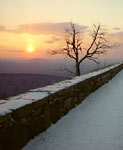
The man at the end of the tunnel (almost invisible here) in the first photograph is the subject and lines of the tunnel bring the eye to the man. On the second photograph the converging lines are the main subject, their blur conveys the sense of motion/speed. Sometimes converging lines used as framing as well. The third photograph (and picture [b] in the prior section) has the converging line (the stone fence), where the line is a border of the frame and it leads the eye to the tree. The converging lines are just one of the application of visual paths that lead the eye.
~ Top ~Breaking the horizon
When you have the horizon line in your picture it is good to have something that breaks the line and stands out, so it is silhouetted by the skylight. Usually it is the main subject of the picture, but it could be something else that adds mood.
Examples:
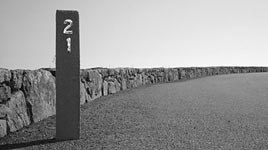


Just a couple of short notes. The object that breaks the horizon, attracts the attention, because when the eye travels along the line created by the horizon suddenly stops at (trips over) the object. And in addition to it, the object serves as the bridge for the eye travel from the "ground level" to the sky.
~ Top ~Meaning of Lines
In painting art there are some meanings to lines and simple shapes. Some lines and shapes mean calm and placid mood, other mean tension and action, some lines direct/move the eye, some attract it to some points. On the image below I listed a few lines and shapes:
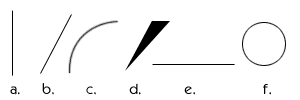
Let´s see what the lines/shape brings to the image:
- Aggression and some tension (but balanced)
- Dynamic and some tension (may lead the eye)
- Calm dynamic, action
- Dynamic and tension (leads the eye to the lower left corner)
- Balance and calm
- Balance and some perfection (the eye either goes along the line or goes inside to the center)
There is one more note to add. Lines of the image
frame (borders) have its meaning as well. The lines dictate balance
of the image and all objects within. Most significance of the lines
within the image belongs to the objects/lines, which are in parallel
with longest lines of the frame. A square frame
is balanced, that´s why it´s hard to compose a square picture.
![End of the article [end of the text]](http://www.romanzolin.com/img/misc/text_end.png)
